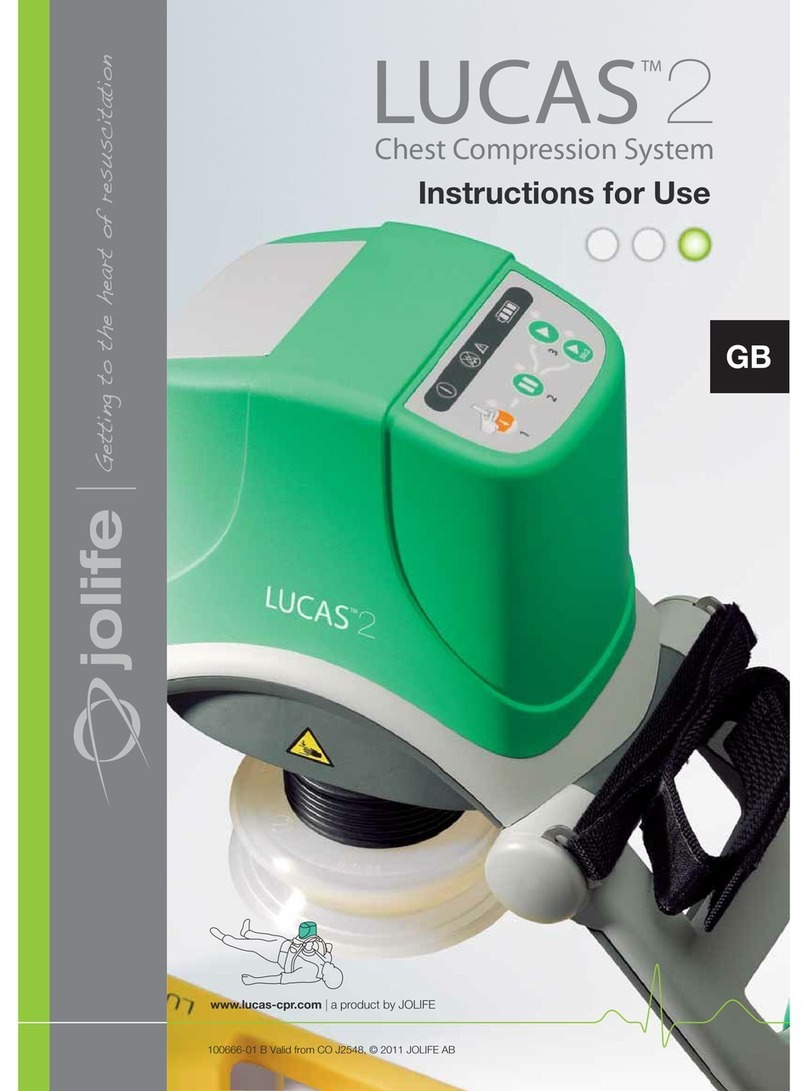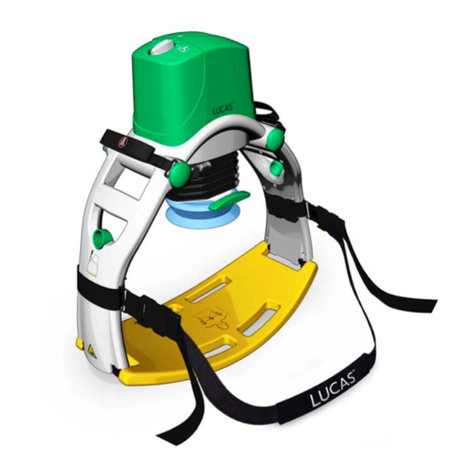
100057-00 F, ©JOLIFE AB 2007 3
LUCASTM CHEST COMPRESSION SYSTEM INSTRUCTIONS FOR USE
Table of Contents
IMPORTANT USER INFORMATION.......................................................................................... 2
1I
NTRODUCTION..............................................................................................................5
1.1 INTENDED USE ...............................................................................................................................5
1.2 CONTRAINDICATIONS..................................................................................................................5
1.3 LUCAS CHEST COMPRESSION SYSTEM...................................................................................5
1.4 LUCAS COMPONENTS .............................................................................................................. 6
1.5 ON/OFF-KNOB, POSITIONS ......................................................................................................7
1.6 DESCRIPTION................................................................................................................................8
1.7 SYMBOLS ON THE DEVICE........................................................................................................... 9
1.8 DELIVERED ITEMS ........................................................................................................................10
1.9 THE LUCAS TEAM.....................................................................................................................10
1.10 BACKGROUND ..............................................................................................................................11
1.11 CHEST COMPRESSIONS USING LUCAS....................................................................................11
1.12 SIDE EFFECTS................................................................................................................................11
2WARNINGS AND PRECAUTIONS.................................................................................12
2.1 ASSEMBLY....................................................................................................................................12
2.2 USING LUCAS CHEST COMPRESSION SYSTEM ....................................................................12
2.3 CONNECTION TO AIR SUPPLY...................................................................................................13
2.4 ADJUSTING LUCAS TO THE PATIENT .....................................................................................13
2.5 HANDLING LUCAS CHEST COMPRESSION SYSTEM ............................................................13
3USING LUCAS ............................................................................................................14
3.1 ARRIVAL AT THE PATIENT.........................................................................................................14
3.2 UNPACKING AND CONNECTING THE AIR .................................................................................14
3.3 ASSEMBLY....................................................................................................................................16
3.4 ADJUSTMENT ...............................................................................................................................17
3.5 OPERATING LUCAS CHEST COMPRESSION SYSTEM ..........................................................18
3.6 DEFIBRILLATION ..........................................................................................................................19
3.7 TRANSPORTING THE PATIENT...................................................................................................19
3.8 CHANGING AIR SOURCES...........................................................................................................21
3.9 REMOVING LUCAS FROM THE PATIENT................................................................................22
4CARE AFTER USE......................................................................................................... 22
4.1 CLEANING ROUTINES.................................................................................................................22
4.2 ROUTINE CHECKS.......................................................................................................................23
4.3 STORAGE .................................................................................................................................... 23
4.4 SERVICE ....................................................................................................................................... 23
5PACKING AWAY THE DEVICE ..................................................................................... 24
6T
ECHNICAL SPECIFICATION....................................................................................... 25
APPENDIX A ......................................................................................................................... 28
WEEKLY CHECK AND CHECK AFTER USE, LUCAS............................................................................28






























